1979 Flh Tappet Blocks Weeping Again!
(This Retrospective article was published in the November 2008 issue of Rider.)
The Harley-Davidson buffs among us know total well what a "Shovelhead" is, only it remains a minor mystery to many of the uninitiated.
Somebody with a large glass of Jack Daniels' in his hand, his 2nd or 3rd, must take come up with that proper noun, because for the life of me I accept never seen the resemblance between that particular cylinder-head design and a shovel. And I accept shoveled out quite a few ditches in my lifetime. But there'due south no point arguing nigh it 40 years down the line.
Advertisement
The Shovelhead was the 3rd rendition of Harley'southward OHV V-twin, post-obit the Knucklehead and the Panhead. When the first Harley OHV twin appeared in 1936 nobody called it a Knuckle, it was just the E-model, or the 61—for cubic inches. Followed in 1941 by the 74-inch F-model. The nickname, according to historians, had to wait until 1948 when the next generation came along and people wanted to differentiate between the two. Squint your optics and that early on Harley iron cylinder-head looked vaguely knuckle-ish, while the subsequent 1 had shiny chrome rocker-arm covers which did indeed resemble the pans one might discover in a kitchen. The Pan enjoyed the maintenance-free attribute of hydraulic valve-lifters, a necessary advocacy since it took a while for the atomic number 26 cylinders to estrus up and friction match the expansion of the new aluminum heads.
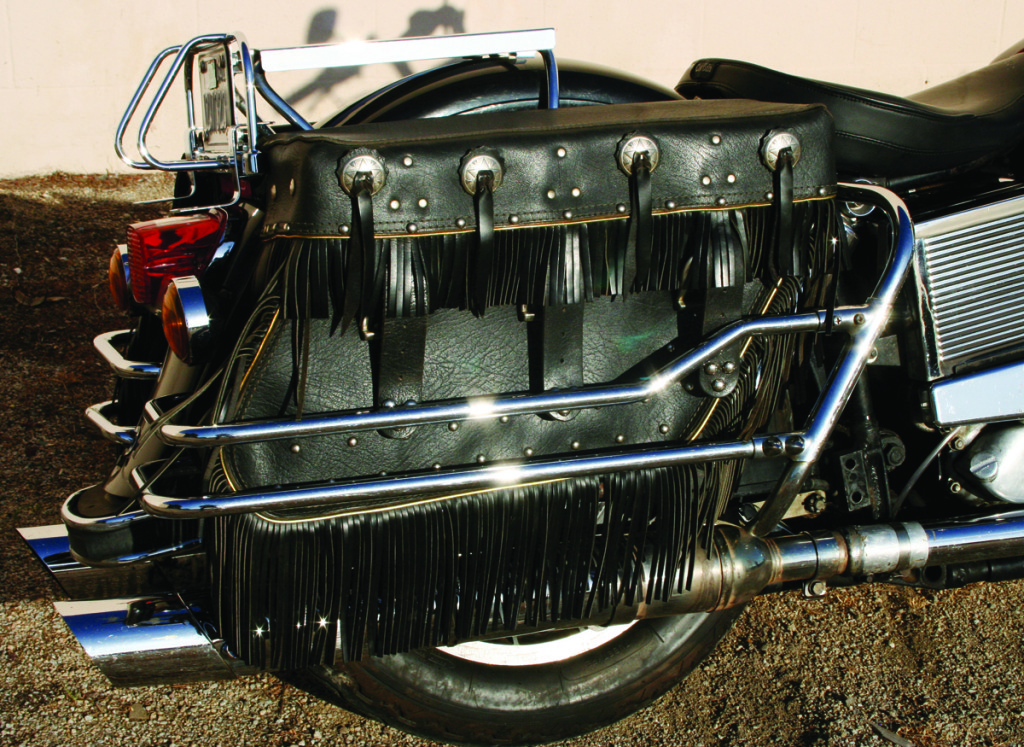
The Harley applied science section had ever been ploddingly methodical, taking intendance of problems as they arose, never rushing to be the firstest with the mostest. As the Pan got heavier with changes in suspension and the add-on of an electric starter, the manufactory decision to increment power was in order. Cipher drastic, but in 1966 the 74-incher got new aluminum-alloy "Ability Pac" heads, which Harley claimed gave an increase of x horses …and looked vaguely like the back end of a shovel. Instead of simply being a comprehend, the new Shovel pattern was the actual cylinder head, with rocker-arm pin-points engineered into the casting. The FLH engine, the hotter version, was rated at 60 horses at 5,500 rpm.
The head was the but really new piece to this motor, as the company kept the iron barrels and bottom end of the previous Pan, besides as the generator. In 1970 the generator gave way to an alternator, with the points in the old-fashioned distributor disappearing inside the new timing case.
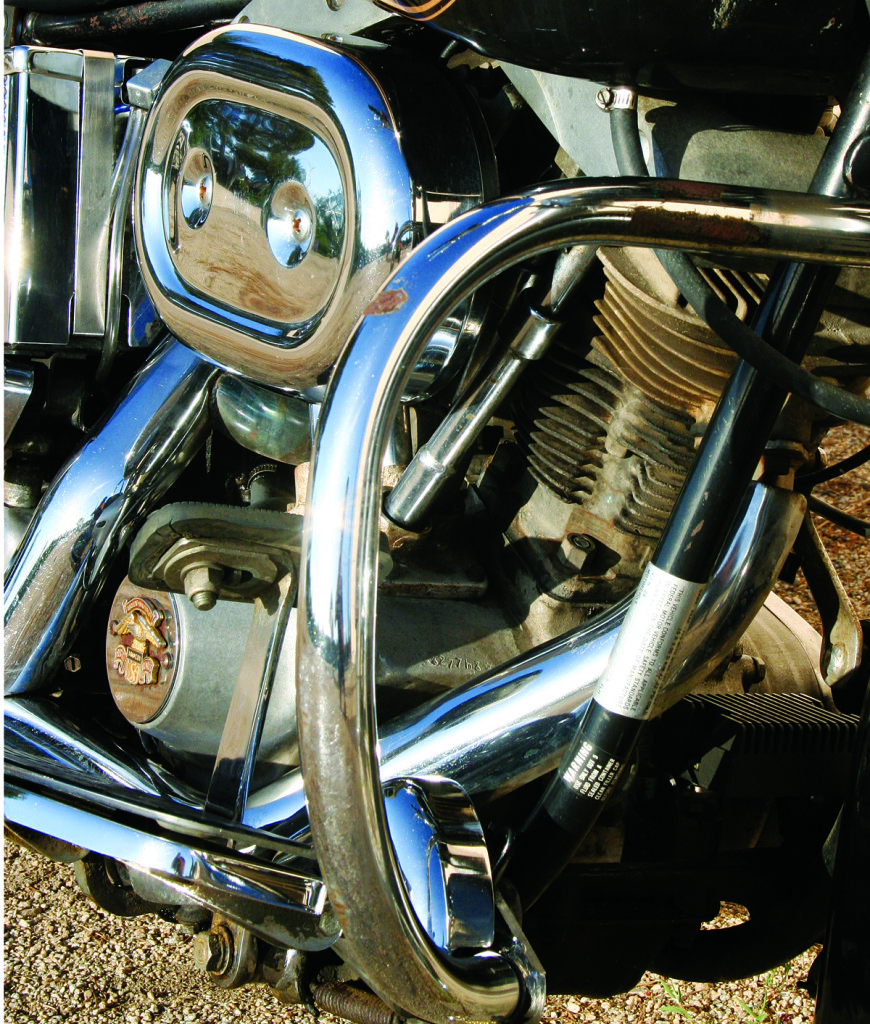
More changes were going on within the company structure than in R&D. Harley had invested in the Italian Aermacchi visitor in 1961, hoping to get its share of the pocket-sized-cycle marketplace. That had non gone also well, as the influx of Japanese models underpriced and outperformed these pseudo-Harleys. In an effort to bring in more cash Harley went public in 1965, though not very successfully; patently the family unit style of management could have used a hard-nosed MBA to sort things out. The company was struggling financially and executives were talking with possible buyers, notably American Machine & Foundry, which decided to buy in. The public stock was bought back, and the factory began a dozen years with the AMF characterization on the tank, a mixture of practiced and bad years.
Skillful because immature Willie Grand., the grandson of H-D founder William A. Davidson, took charge of the styling department and designed the mill'south first "custom" motorcycle, the 1971 FX Super Glide, essentially a Shovel FLH with a Sportster front end. Some attribute this new "look" to the success of the Easy Passenger pic, with ii disaffected young men taking off on a cross-country trip on a pair of customized Harleys. In 1977 the Low Rider appeared, another sales hit.
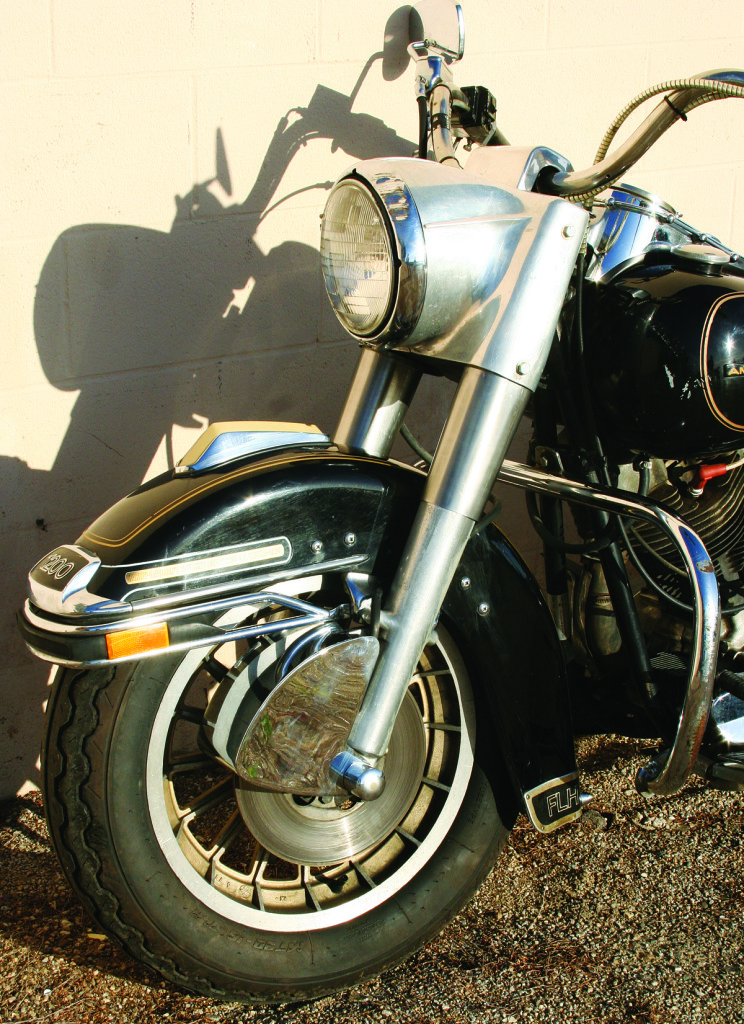
The bagger types (those who liked the King of the Highway touring packet, with batwing fairing and saddlebags) still had their FLHs, merely now the market was expanding. Slowly.
Too slowly, for the likes of AMF. They were realizing that they were stuck with some distinctly outdated engineering science and tried to push button the manufacturing plant into a modernization program. The AMF futurists began a program to build a motorcycle that would compete with the Japanese, while the Harley traditionalists wanted to go on developing the pushrod V-twin. The quality of Harley motorcycles deteriorated in the late 1970s, which management blamed on disaffected employees—sales drooped.
Poor sales? Give the Shovel more power! For 1978 the 74-inch engine was bored and stroked to 80 inches (81.7 in reality) and first offered in the FLH model, with the number 80 written conspicuously across the air cleaner. The merely visible difference between the 74 and the fourscore was in the number of fins on each cylinder—the 74 had 10, the eighty, due to a thicker base, only nine. The new V-Burn ignition was at present controlled by electronics, which made many a purist cry with rage and frustration. What could a passenger practice if his spark went away?
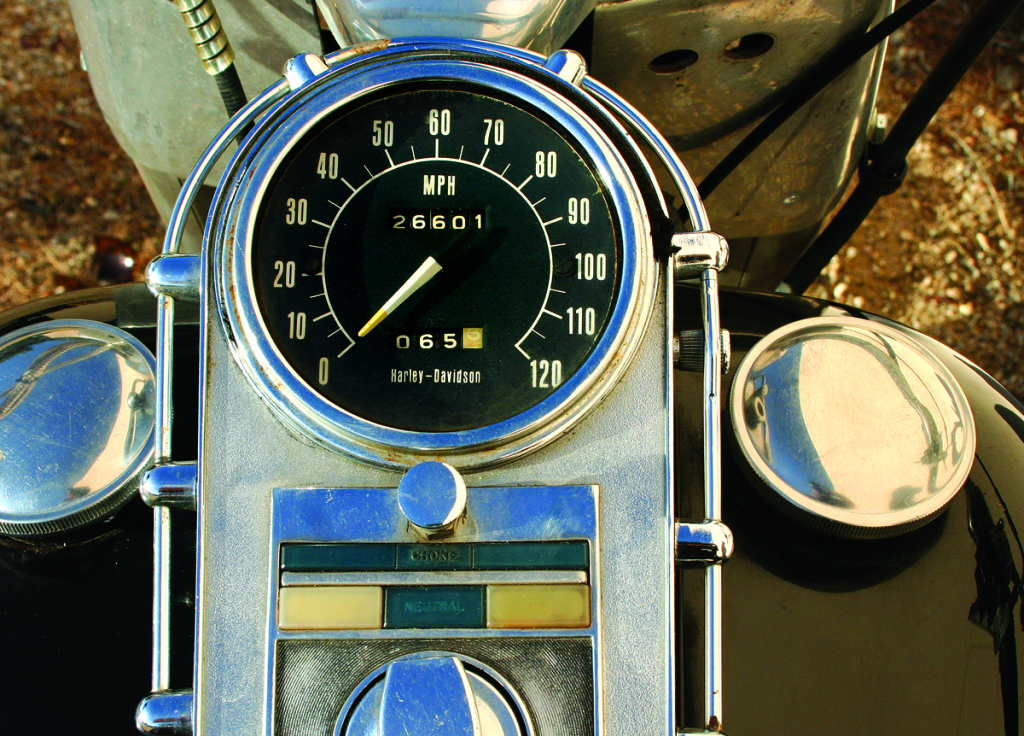
Next on the Shovel agenda were two variations in 1980, the FLT and the Sturgis. The FLT had a make-new chassis, the 80-inch motor, and a new five-speed gearbox. The biggest departure was that the engine/transmission package was rubber-mounted, taking abroad the dreaded 5-twin vibes. Behind the frame-mounted fairing an interesting steering arrangement was hidden, with the steering head actually behind the fork tubes, which created a relatively agile 750-pound motorcycle. Non so pop was the fully enclosed last chain drive, which made changing rear tires an admittedly hateful job.
On the FXB (B for Belt) Sturgis that rear-chain problem was resolved by using a belt drive. And a belt on the primary bulldoze equally well. Harley had long used a dry clutch, carefully isolated from the oil-bathed primary chain, so a dry out primary belt was a natural. Unfortunately the main worked far meliorate in theory than in reality, where the heat affected the safety damping blocks or "compensators" on the crankshaft pulley—causing deterioration and requiring replacement. The belt principal notion was eventually trashed, returning to the duplex chain.
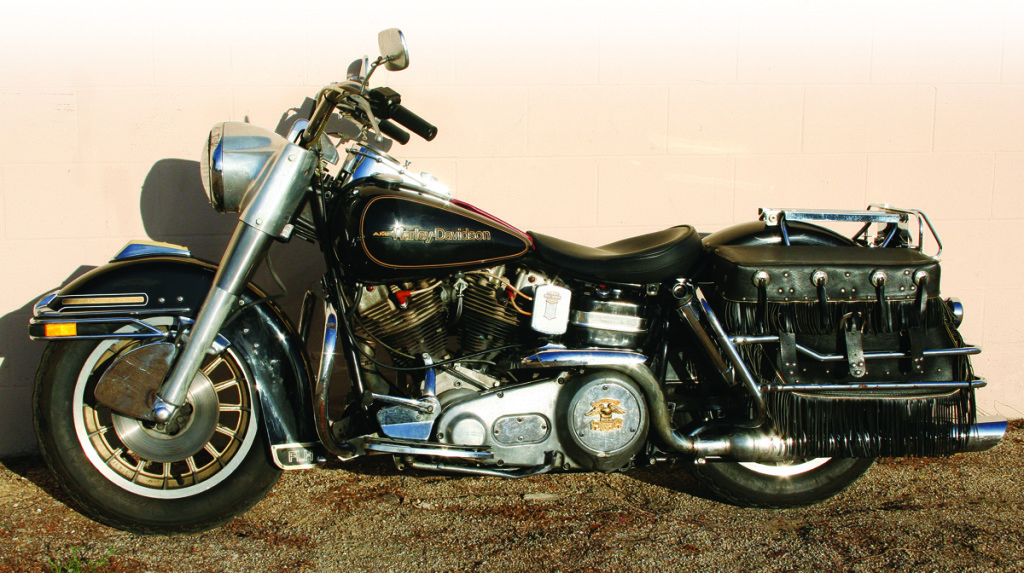
In 1981 a dozen Harley executives bought the visitor dorsum from AMF, and the traditionalists were in charge. The Shovelhead soldiered on until 1984, when the Evolution engine—essentially new aluminum head and barrels on the one-time crankcases—began to have over. A serious effort was made to call information technology the Blockhead, just the factory wanted a little more than elegance and their constant reference to the "Evo" motor won out.
The Shovel got a bad rap in the 1970s, but is at present considered quite desirable. This one in the photos is decked out with a lot of Harley chrome accessories, from luggage rack to disc guard, and a Corbin saddle and Big Bertha saddlebags.
Advertisement
Source: https://ridermagazine.com/2008/11/25/retrospective-harley-davidson-shovelhead-1966-1984/
0 Response to "1979 Flh Tappet Blocks Weeping Again!"
Post a Comment